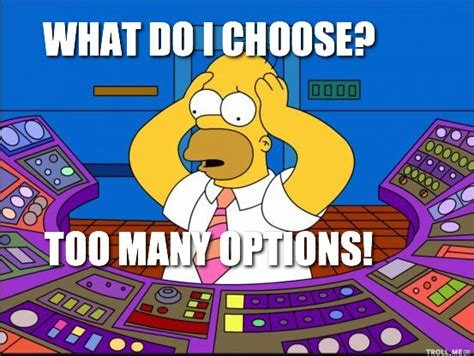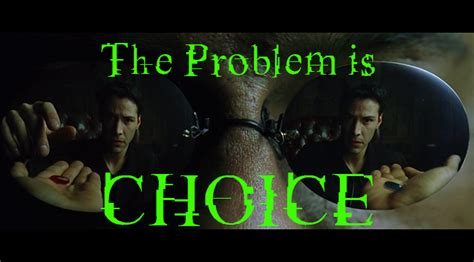
Security Blog, Rants, Raves, Write-ups, and Code
The Post-COVID19 Workforce – Part 3 - The Choice
11/10/2020
Chris Ruggieri
On September 2, 2020, I published an article about what I felt the Post-COVID workforce should look like (mainly advocating a more remote work option). On October 26, 2020, I published an “inverse” article with a Q & A with Diana Moldovan which provided the perspective that some people are not in a position to be in a more remote situation. This “part 3” article nails down that root of the problem and what we can do to address that problem.
As companies and organizations are re-opening, they (and we as employees) are having to make decisions based upon what that re-opening looks like. Do we go back to a 100% in office scenario? Do we follow Microsoft, Twitter, and many others and go 100% remote? Do we choose a Hybrid model, as my organization has where every other week, we are remote? 75% in office, 25% remote? 75% remote, 25% in office? The possibilities are numerous, complicated, and (perhaps most importantly for this discussion) being driven……..by the organizations.

Let’s add to the problem organizations are facing with these options by saying, no matter which option the organization chooses, a number of employees will be angry (either by being forced back into the office or by being forced to stay remote). So, how do these organizations make a decision that they know is going to cause drama, problems, and turnover? Well, right now, these organizations are trying and testing every combination under the sun and it’s causing headaches and problems. Morale and mental health are declining across all verticals. People are becoming more and more frustrated and angry. Everyone just wants things to go back to normal. Trouble is, what is normal now? We keep hearing the term “new normal” (I just made somebody’s day on Work From Home Bingo!) over and over again. So, what is normal? Does the organization determine what the “new normal is”? You see that it all stems from the same ROOT problem. So, the easiest thing for these organizations to do (and you’re going to love this part), is to …… NOT choose. That’s right. Don’t make the choice. The Choice IS the problem.

Now, here’s where things get fun for everyone. I’m saying the organizations should not make the choice. So, who does? Well that answer is simple. Who does the decision effect the most? The answer is the employees themselves. Let US, the employees, make the decision. Give US the option of how much we are in the office. In the above graphic, Morpheus is the organization and Neo the employee. Only this time, there are literally dozens of different colored pills to choose from instead of just red or blue. Give your employees the option. Don’t force anything down our throats (going back to the pill reference).
Now I can already hear all the C-levels and Management types blowing gaskets over what could be a cacophony of insanity with all of their reports choosing different schedules and how do I ensure they’re actually working, etc. Firstly, TRUST your employees. Whether they are in the office, remote, or anywhere in between, they are interacting with YOUR customers in some way. If you don’t trust them just because they’re on-site vs off-site vs everywhere else, then why are they interacting with your customers? It’s clear you don’t trust them. Secondly, it is an easy thing to set scheduled reviews every X number of months to ensure that employee’s productivity is the same or higher than whatever your personal preference of location is. I’m not talking anything “nanny-ware” like, but simple metrics that should already be in place. An IT call center, for example, could have an X% first call resolution rate metric. If someone chooses off-site and their call volume drops 30% and the FCR rate drops 10%, yeah that choice might need to be re-examined. Flip side of that, my personal metrics and productivity increases 15-20% on the weeks that I am remote. As far as all your direct reports picking different schedules, you’ve just described every major Regional Sales Manager of every major organization on Earth. Again, easily managed.
Placing the choice, providing the options and flexibility, makes employees happier, which has already been proven to improve performance, decrease burnout rates, and thereby increase profits, which is why we’re all in business to begin with. Now it’s time for the monkey wrench to be thrown into this theory too (we all know how much I love playing Devil’s Advocate). So, let’s play with this scenario. 1000-person office workforce. 50% initially choose remote 100%. Do you still purchase or rent office space for 1000 or a shared space for 500, or again the options are nearly endless? With giving the employees the options, flexibility, and choice, how does the organization deal with its real estate problem? What if even 10% of those that choose fully remote change their minds later? I have a close friend that, all he wanted, was 100% remote. Now, that he has been 100% remote for a year, he’s noticing that he’s having a hard time “unplugging”. Even myself! Between working 50-60 hours a week, getting writeups done for CTF events, and even writing these articles, I find myself plugging away on a computer almost every waking moment. I am currently on a hybrid 50/50 model where 50% of the workforce is in the office one week and the other 50% is remote. On the following week, they switch. So, even a hybrid model presents its own challenges. How can an organization plan around these uncertainty principles? Do these organizations need to control the choice mechanisms? No matter how you look at this new landscape, there are obstacles no matter what the choice, but it all still revolves around the problem of choice. Who makes it and how do we deal with it?
Two things are certain. No one person has the answers. I certainly don’t. Like I said in the first Ransomware series article, I’m just some schmuck living in the middle of nowhere. In this series, I’ve given my perspective from rural Alabama, Mrs. Moldovan provided her perspective from living in London, and I’m sure there are thousands of people (hopefully reading this) that are everywhere in between. We all know and agree on one thing. The landscape of working during and after this pandemic will never be the same. All we can do, is make the CHOICE to, how did the British WW II poster put it, “Keep Calm and Carry On”.
